Rhythmical Einreibung as developed by Wegman/Hauschka for infants and toddlers
Warmth Breathing
Anette Beisswenger
Last update: 04.04.2022
Dear Parents,
Imagine you are standing on a warm sandy beach by the sea, the waves of the water rhythmically wash around your feet and you feel and hear the rhythm of the lapping waves. The perception of rhythmical recurrence has something calming, soothing. It is an expression of a natural force that touches us whenever we encounter it. The amniotic fluid also washed around your still unborn child in small rhythmical wave movements.
The growing love for your child – even before birth, but also afterwards – forms the protective envelope and security that it had physically in the womb. The newborn baby leaves the protected space in which it develops, the prenatal world in the mother, and now meets you for the first time to touch, look at and marvel at.
These are new conditions for your child: experiencing gravity and different temperatures, tastes and smells, dressing, feeding and much more. Being touched has also changed for the child. After being touched by the amniotic fluid, the feeling of their own touch, the inner wall of the uterus and your hands on your stomach, they now experience direct touch from you after birth. This loving touch has an important, far-reaching meaning for your newborn child. They come from a warm and fluid space in which there was always a uniform temperature. The warmth your child felt in the womb – both physically and emotionally – helped your child to grow and flourish, and warmth will also be important in their further development.
You can clearly experience physical warmth on yourself, for example when you hold your two palms facing each other and increasingly reduce the distance between them. You will feel warmth between them the closer they get. Warmth and rhythm in the movement of the hands are the basic elements of rhythmical Einreibungen and warmth breathing.
What is rhythmical Einreibung and what effect does it have?
Rhythmical Einreibung involves the application of a substance through touching with warm, perceptive hands and the rhythmical performance of stroking movements according to set guidelines. It was developed in 1921 by the physicians Dr Ita Wegman (1876 – 1943) and Dr Margarethe Hauschka (1896 – 1980) at the Clinical and Therapeutic Institute (now Klinik Arlesheim) and has since been used worldwide by nurses, rhythmical masseurs and midwives and is taught in courses. Its use has among others a calming, relaxing, loosening, respiratory deepening, warming effect.
What is warmth breathing and what effect does it have?
This rhythmical Einreibung was specially developed for infants and toddlers. Warmth breathing is gentle envelopment with both hands of the parts of the child’s body to which it is to be applied, with the hands moving back and forth in relation to one another in a breathing, rhythmical way and a quality of touch of compression and release.
In doing so the hands always remain in contact with the clothing or skin so that the child experiences it as a warming, rhythmical and breathing touch.
The infant and toddler Einreibung can be applied over the clothes – thus usable in all circumstances – or directly on the skin with a selected substance.
Warmth breathing has among others a warming, calming, relaxing, antispasmodic and respiratory deepening effect.
It conveys warmth, envelopment, security, safety and trust in the sense of a relationship-enhancing action.
When is warmth breathing used?
- In daily body care,
- In everyday situations such as restlessness, stomach cramps, insomnia,
- In case of illnesses (which cannot be discussed in detail here, as this requires professional guidance or a doctor’s prescription).
General information about infant and toddler warmth breathing
The hands can “speak” to the child if they are placed attentively and with care. We know the feeling when we get a warm hug.
The restless child needs a father or mother who is present in a calm and collected manner. To be able to relax, the child first needs the undivided attention and affection of the parents.
Being engaged in this situation as an adult leads us to ourselves and we become calmer.
Things that can help us to become calmer before applying warmth breathing are, for example, short breaks in the fresh air, taking a short walk, breathing deeply for a short time, thinking a good thought. Our own calmness is transferred to the child in the best sense.
Short preliminary exercise on yourself
Place your hands (palms) opposite each other on the outside of your thighs and sense what you perceive: the fabric of your clothing, warmth, body shape, muscle tension. Then intensify the contact of the hands towards each other slightly, as if a wave were moving towards the centre between your thighs and coming back into your hands, in a wave rhythm of about six times a minute.
We call this movement warmth breathing, it is the basic movement of Einreibung for children. Every time we place our hands at the locations on the child’s body set out below, we do the warmth breathing about six times per minute, for two minutes.
Warmth breathing during daily body care
Warm hands and a warm environment are the best conditions when undressing the child to apply a substance. Note that only the part of the body that has just been treated should be uncovered, everything else remains covered.
The following is very important in warmth breathing for children: less is more! This means that when you do warmth breathing, you should do it with full attention.
Procedure
- The child lies unclothed on the changing table, covered with a warm cloth.
- We stand at the child’s feet.
- We start with touching the head, followed by the rest of the body, part by part.
- The oil, emulsion or ointment is warmed in the hands and then applied to the respective body part.
The following description explains the treatment of the whole body. However, single parts of the body can also be treated.
1. Head
The hands begin with an enveloping gesture around the head and then hold the back of the head in both hands placed one above the other which lie on the base (Fig. 1 and 2). The forearms are positioned next to the child’s body. Only the head is held! We do not yet perform warmth breathing or Einreibung!
Slowly release this hold again by sliding the hands out to the sides.
The head is only part of the treatment in the first months of life, it is no longer part of it in the older child.
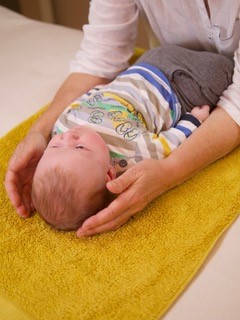
Fig. 1: Start of the enveloping gesture at the head. © Anette Beisswenger
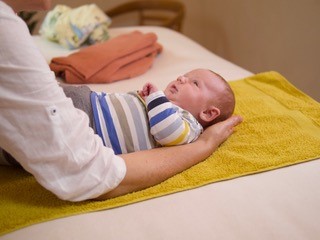
Fig. 2: Holding the back of the head with both palms. © Anette Beisswenger
2. Feet
The right hand takes the soles of the feet in the palm of the hand and the left hand covers the feet (Fig. 3). Then gently compress the palms towards the feet and away again in the manner of warmth breathing. From crawling age onwards, each foot is taken individually for Einreibung (Fig. 4).
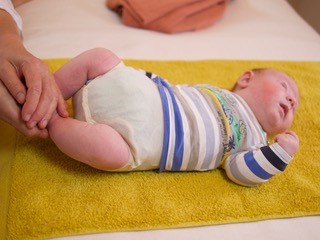
Fig. 3: Warmth breathing on the feet. © Anette Beisswenger
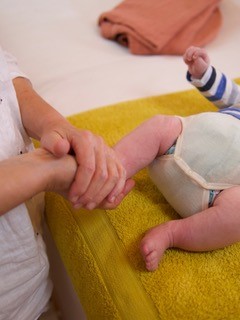
Fig. 4: Warmth breathing on the feet at crawling age. © Anette Beisswenger
3. Lower legs and thighs
The left hand is placed on the outside of the right lower leg, then the right hand on the outside of the left lower leg. The thumbs rest loosely at the level of the child’s knees. In this position two-handed warmth breathing is now performed (Fig. 5).
Then perform the Einreibung on the child’s thighs in the same way, first placing the left hand on the outside of the right thigh and then the right hand on the outside of the left thigh (Fig. 5). During warmth breathing, the tips of the fingers rest on the side at the hips. From crawling age we do warmth breathing around the right and the left leg separately.
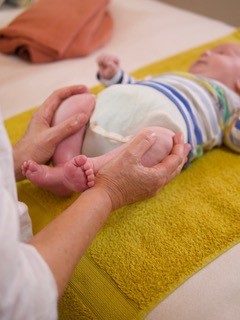
Fig. 5: Warmth breathing on the lower leg. © Anette Beisswenger
4. Hands, forearms and upper arms
The right hand is positioned at the side at the child’s left hand and forearm up to the elbow and the left hand envelops the child’s right hand and forearm up to the elbow (Fig. 6). Then warmth breathing follows. Warmth breathing is performed on the upper arms in the same way as on the forearms (Fig. 7). From crawling age we touch the right and left arm separately.
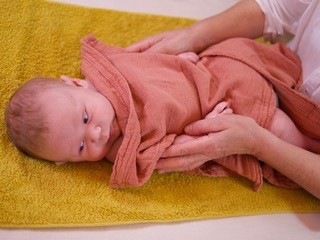
Fig. 6: Warmth breathing on the forearm. © Anette Beisswenger
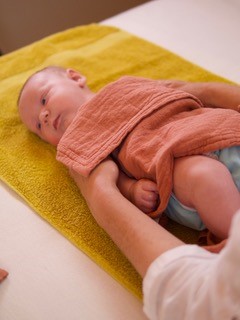
Fig. 7: Warmth breathing on the upper arm. © Anette Beisswenger
5. Abdomen
The abdomen is treated in the supine position, with the right hand placed on the child’s lower back and the left hand resting lightly on the child’s abdomen (Fig. 8).
Another variant, for very distended abdomens, is warmth breathing with the baby lying on their side.
With the child in the left lateral position, the left hand is positioned on the child’s lower back, the heel of the hand below the coccyx and the fingers pointing towards the child’s head. The right hand is positioned on the child’s abdomen. Then warmth breathing again.
Variation: the child lies prone on the left forearm with the abdomen resting in the open left hand. The right hand is positioned on the child’s lower back. Warmth breathing between the two hands.
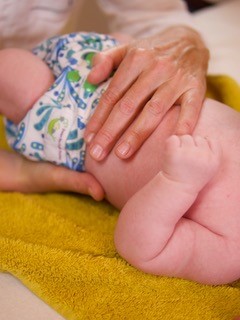
Fig. 8: Warmth breathing on the abdomen. © Anette Beisswenger
6. Back
The child lies on their stomach. Place both hands on the child’s back, fingers pointing upwards towards their head, with the heels of the hands at about the level of the pelvis. Resting on the spot, the hands move just very gently towards the child and away again in the manner of warmth breathing.
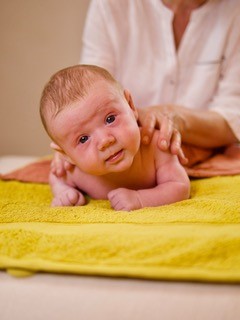
Fig. 9: Warmth breathing on the back. © Anette Beisswenger
What to do in case of abdominal cramps, restlessness, insomnia?
The basic rule is to ensure calm and relaxation, both in terms of the room and through your inner attitude. “Unsuitable” situations usually occur more frequently when, for example, the child is not lying nicely and quietly on the changing table but you may be out and about or it happens in the middle of the night, and therefore such situations require adapted, sometimes also unusual handling. This includes warmth breathing also being done over clothing and the child not needing to be undressed for the treatment to be effective. The child can be given warmth breathing when sitting on your lap, for example, or you can hold them turned towards you so that your hands can touch their back, breathing warmth.
- For abdominal cramps
The child needs quietness and warmth to be able to absorb and digest its food. If they are surrounded by unnecessary, distracting impressions, this can lead to disorders in the digestive process. If the stomach does not have quietness for digestion, it becomes too “nervous” and abdominal cramps occur. Also avoid clothes that are too tight around the stomach. To support the child’s digestive work, a thin woollen cloth can be loosely wrapped around the stomach over the clothing. Over the clothes or on the skin, start the warmth breathing on the abdomen and try out whether lying on the back or side or prone on the left forearm is best.
- For restlessness, crying
First of all, do not increase the restlessness through animation or distraction but create calming elements. Find out, as far as possible, the cause of the restlessness or crying and remedy it. Hold the child in your arms, talk calmly to them, sing, wrap them in a cloth as appropriate (swaddling). Still over the clothes, apply warmth breathing to the abdomen and upper arms, but also to the lower legs. If you want to add a substance, Hauschka Rose Oil with its harmonising effect can be recommended.
- Insomnia
First of all, create a starting situation in which calm can return. Also as far as we ourselves are concerned.
Perhaps air the room once more, then reduce the light and see if the child needs to be changed again, whether their feet are warm. If not, it is good to do warmth breathing on the feet and lower legs and/or put on woollen socks. Let your own voice become quiet, sing a lullaby.
Warmth breathing on the back is very sleep-inducing and can be enhanced with Hauschka Rose Oil.
Notes on the substances
Use good quality oil, if possible from organic or biodynamic cultivation, e.g.
- Almond oil or mild olive oil
- WELEDA Mallow Lotion for dry skin
- HAUSCHKA Rose Oil or WALA Rose Caring Oil for restlessness, crying, insomnia
Products from WELEDA and WALA HAUSCHKA are recommended. These companies work exclusively with natural raw materials from organic or biodynamic cultivation. The processing of the valuable raw materials takes place according to rhythmising processes.